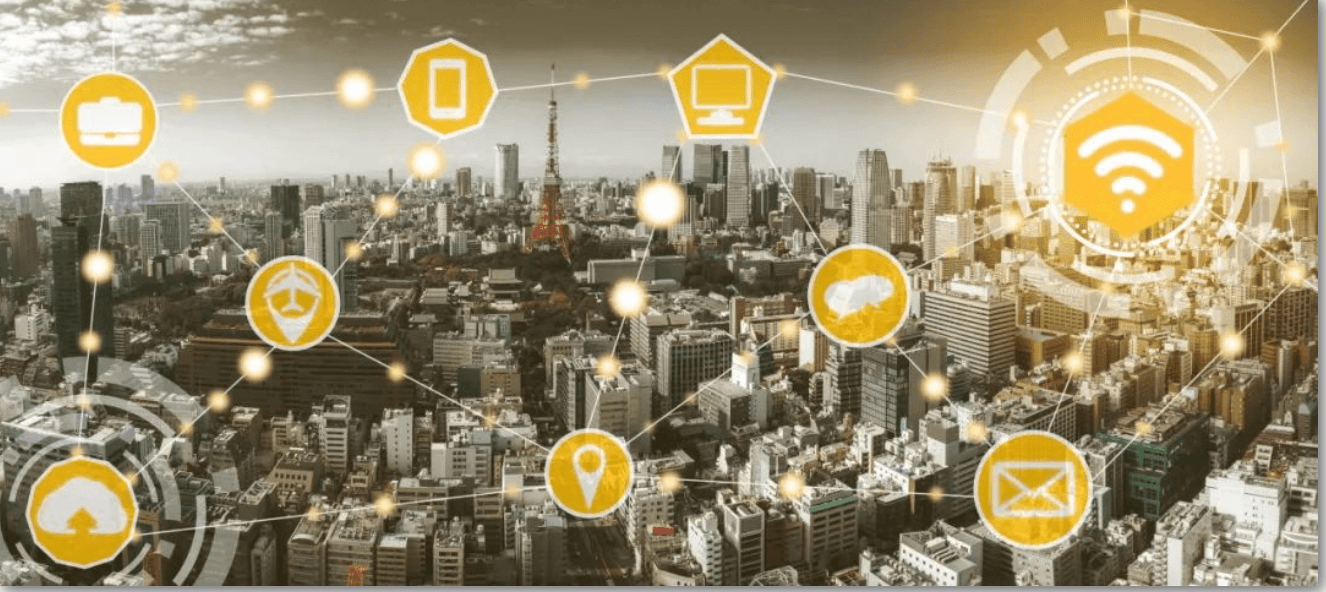Key Takeaways:
1.Smart Buildings Drive Sustainability: Smart homes use advanced technology to enhance efficiency, performance, and sustainability. They reduce energy waste, lower carbon emissions, and play a vital role during disasters.
2.Optimized Energy Management for Savings: Automated buildings not only meet regulatory requirements but also offer significant financial benefits. They detect energy spikes, enabling efficient energy use and reducing operational costs.
3.Enhanced Comfort and Safety: These buildings prioritize occupant well-being through automated equipment control and security measures, all integrated into efficient building management systems.

The Era of Smart Buildings
Smart homes are at the forefront of a groundbreaking transformation in our cities. These remarkable structures harness cutting-edge technology to enhance efficiency, performance, and sustainability, not only making our daily lives better but also contributing to a brighter future. Let's delve into the significance of smart buildings and how they are reshaping the world.
Why Smart Buildings Are Game-Changers
Smart buildings play a pivotal role in the long-term sustainability and resilience of our infrastructure. Take energy efficiency, for example – a cornerstone of sustainability. Smart buildings utilize an array of sensors, controllers, and advanced technology to continually monitor and adjust energy consumption in real-time. This not only minimizes waste throughout the entire energy lifecycle, from production to usage but also leaves a lasting positive impact on the environment by significantly reducing global carbon emissions.
However, the importance of smart buildings doesn't end there. During natural disasters like floods or earthquakes, smart buildings step up as heroes. They come equipped with automatic shut-off systems that safeguard lives by swiftly disconnecting power when floods trigger a power surge. This protects individuals from electrocution, and once the calamity subsides, these buildings are poised for rapid and autonomous recovery, eliminating the need for manual intervention by trained professionals. They are the unsung saviors in our cities.
The Importance of Optimizing Energy Management
Reducing energy consumption is not merely a regulatory obligation; it's also a financially astute move, especially for large real estate portfolios. The potential savings are staggering. Smart data analytics enable energy consumption to be optimized with remarkable precision. These buildings not only detect consumption spikes but also pinpoint their underlying causes. Should the spikes be tied to equipment failures, swift repairs or replacements follow, resulting in considerable energy savings. The data gathered and analyzed serve as invaluable decision-support tools for energy retrofit initiatives. In the world of smart buildings, energy management transcends mere reactivity and becomes proactive, thanks to a connected architectural framework. These buildings can simulate energy consumption changes by altering specific variables, thus providing accurate forecasts and data on energy expenditures that can either validate or dismiss potential investments. Furthermore, smart buildings can streamline various services, such as maintenance staff management, and reduce operational costs by tailoring maintenance schedules to the actual needs of the building and its occupants.
Reducing Environmental Impact
The energy consumption in a building involves multiple energy vectors, including electricity, gas, water, and heat. Historically, these energy systems operated in isolation, each with its separate networks and actors, leading to a lack of coordination. The true potential for energy savings, however, lies in the interaction between these vectors, such as the conversion of electrical energy into heat or gas.
Smart buildings adeptly collect and analyze multi-fluid data to provide a comprehensive perspective on energy performance, covering both global and sub-regional contexts. This holistic approach unlocks synergy between various mediums and fosters the integration of renewable energy sources into a building's energy mix. Consequently, smart buildings not only reduce a property's energy consumption but also actively promote the integration of renewable energy sources, including the ability to assess the impact of installing solar self-consumption systems in advance. These connected buildings are, therefore, the perfect response to the challenges posed by the ongoing energy transition. For stakeholders, it represents not just a way to meet regulatory obligations but also a potent lever to fulfill corporate social responsibilities.
Comfort and Safety
Connected buildings make a substantial contribution to occupant comfort. Data management facilitates automatic control of equipment, enhancing the overall experience within the building. For instance, in the case of smart lighting, integrated sensors can dynamically adjust brightness based on room occupancy and occupant activity, ensuring both energy savings and an optimal environment for building occupants. Similarly, temperature and air circulation in a room can be automatically fine-tuned for maximum comfort. The presence of sensors bolsters security, swiftly detecting intrusions or suspicious activity in buildings, ensuring the safety and well-being of occupants.
Building Automation Control Systems
Building automation is the cornerstone of smart buildings, integrating various building systems like HVAC, lighting, and security into a centralized platform. The primary goal is to boost efficiency, comfort, and energy management. HVAC systems play a pivotal role in building automation, responsible for maintaining the ideal temperature, humidity, and air quality for building occupants. However, the integration of HVAC systems into building automation presents several challenges, including dealing with outdated systems, ensuring compatibility among various components, and handling the complexity of HVAC systems. Despite these challenges, the benefits of incorporating HVAC into building automation are substantial, leading to increased energy efficiency and improved occupant comfort.
Smart lighting and energy management systems within building automation contribute to reduced energy consumption and cost savings while ensuring optimal lighting conditions. These systems adjust lighting levels automatically, factoring in occupancy, natural light levels, and the time of day to create an energy-efficient and comfortable environment.
To facilitate seamless integration and communication between different building systems and equipment, the use of common communication protocols such as BACnet, LonTalk, and Modbus is essential. Building automation systems ensure that diverse building components and systems can communicate effectively and collaborate, resulting in a well-integrated and efficient building management system.
The successful implementation and maintenance of building automation control systems require meticulous planning, careful system selection, and ongoing maintenance to achieve optimal performance and longevity. Building owners and managers must consider a variety of factors, from selecting the right system to ensuring interoperability and conducting regular updates.

Upcoming Events
Mark your calendar for June 3-5, 2024, as Herui expo hosts a gathering of industry leaders and engineering experts in the field of building automation and smart home at WieTec 2024. You will be provided insights on how smart buildings can effectively contribute to energy conservation, cost reduction, and increased efficiency. Embrace the future with us by learning more about one of the largest events in China for home automation and smart home systems.


